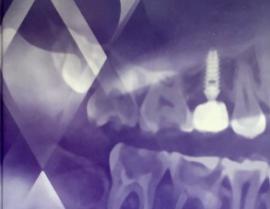Diagnostic radiology is a complete course of diagnostic procedures necessary to assign adequate treatment of diseases such as thrombosis in the central nervous system, peripheral, recanalization, and others.
For this purpose, in an organism of the patient is administered a small amount of weakly radioactive substances, which together with the bloodstream migrate to the investigated organs, absorbed in varying proportions body tissues. Radioactive substances disintegrate, forming the radiation, and the results fixes the supersensitive camera.
The resulting snapshot allows the doctor to see the overall picture of the distribution of the drug in the internal organs. Such visualization helps doctors to produce an accurate diagnosis, trace the metabolism and make the right decision on further treatment. This technique allows to investigate the heart, lungs, bones and the thyroid gland.
CT coronary angiography and cardiac MRI examinations
CT coronary angiography and cardiac MRI examinations are carried out in close cooperation with the cardiology department. Diagnostic spectrum is complemented by mammography, including the preoperative marking of tumors needle.
Minimally invasive therapeutic radiology
Minimally invasive treatment occurs via a catheter, inserted through inguinal region or during interventions under CT control.
Minimally invasive treatment of vascular stenosis and occlusions
Percutaneous balloon dilatation (PTA) or the installation of the prosthesis (stent) in the artery to eliminate narrowing or occlusion of blood vessels, an outpatient or day hospital. In this blood flow through vessels is normalized, or at least is considerably improved, so that the patient can again walk without pain.
Minimally invasive treatment of tumors
Is used of tumor embolization (TACE) and percutaneous tumor ablation (RFA). Both methods of treatment cause little harm to patients and may partially be conducted even in a day hospital. The purpose of tumor embolization - the deprivation of its blood supply, whereby the tumor is destroyed.
Minimally invasive treatment of bone fractures
Under the control of CT and / or x-ray control be aspirated broken and unstable due to tumor infiltration of vertebrae. Due to the introduction of cement in broken vertebra (vertebroplasty) they are stabilized.
hide
 Diagnostic radiology helps to detect the disease in its earliest stages, see the pathological changes and damage to of internal organs and the musculoskeletal system of the human body.
Diagnostic radiology helps to detect the disease in its earliest stages, see the pathological changes and damage to of internal organs and the musculoskeletal system of the human body. 






